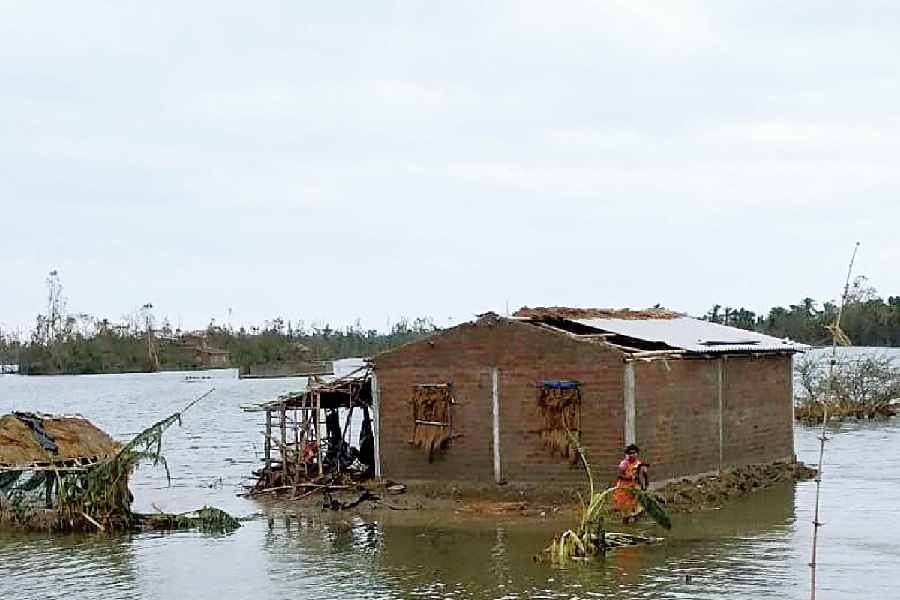A new coastal hazards study has classified four in 10 villages in India’s Sunderbans under “high vulnerability” or “very high vulnerability” categories and estimated that 350,000 residents there are among the most vulnerable to natural hazards.
The study has delineated clusters of villages that researchers say need to be urgently prioritised for protective or remedial actions in the Sunderbans, the world’s largest mangrove delta shared by India and Bangladesh and long recognised as particularly susceptible to natural hazards.
Researchers in Calcutta and Mumbai who evaluated vulnerability levels and the resilience capacity of 1,061 villages in Bengal’s Sunderbans have placed 128 (12 per cent) villages in “very high vulnerability” and 324 (31 per cent) villages in “high vulnerability” categories.
They took into account potential exposure to cyclones, flood inundation, storm surges and proximity to drainage channels, population density and socio-economic factors, including assets and the presence of concrete houses to assess villages’ vulnerability and resilience.
Their analysis has suggested that Gosaba and Canning II are among the most vulnerable community development blocks with 16 very high-vulnerability villages in each, followed by Canning I (15 villages), Basanti (13 villages), and Kultali (11 villages) in the very high vulnerability category.
The researchers have classified only 75 (7.07 per cent) of the 1,061 villages as having “very high” resilience and 277 (26.1 per cent) villages as having “high resilience” to natural hazards. Namkhana, Patharpratima and Sagar are among the blocks with “substantial resilience”, they said.
“The higher the resilience, the better the capacity to cope with natural hazards, whether cyclones or tidal waves or flood water intrusion,” said M. Hasnine, a researcher at the International Institute of Population Sciences, Mumbai, who led the study.
The study, published last week in the journal Natural Hazards Research, has suggested that a significant proportion of villages in the southern and southwestern regions of the Sunderbans exhibit moderate or low resilience capacity.
The researchers have attributed high resilience to high workforce participation, the presence of tourist sites, and well-built concrete housing while low resilience is linked to limited livelihood opportunities, mud housing, primitive boat transportation and lack of potable water.
In an earlier phase of the study, Hasnine and his research supervisor Rukhsana, an environmental geography expert and faculty member at Aliah University, Calcutta, had classified Basanti, Gosaba, Hingalganj, Kultali, Namkhana, Patharpratima and Sagar as “highly vulnerable” blocks.
They have estimated that around 17 per cent or 350,000 people across these blocks are among the most vulnerable in the Sunderbans. The proportion of people under very high vulnerability varies from block to block — from 60 per cent in Hingalganj to 26 per cent in Gosaba to 0.38 per cent in Kakdwip.
“We’re hoping such studies will help government planners and decision-makers to prioritise and allocate resources where they are needed the most,” said Rukhsana, who uses a single name.
The Sunderbans is home to an estimated 4.5 million people — many of whom live off cultivation, fishing and wild honey-collection, while exposed to risks of cyclones, storm surges and seawater intrusion into homes.











